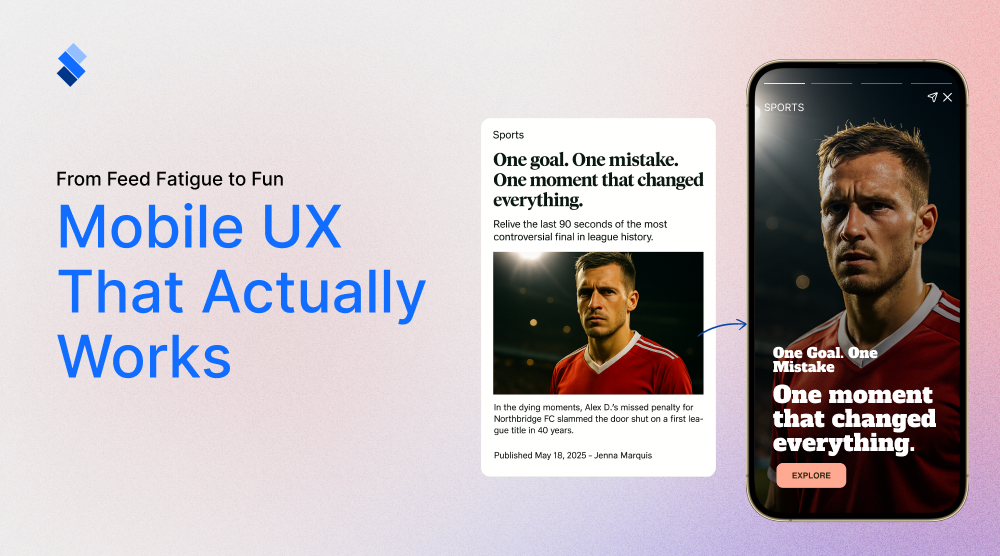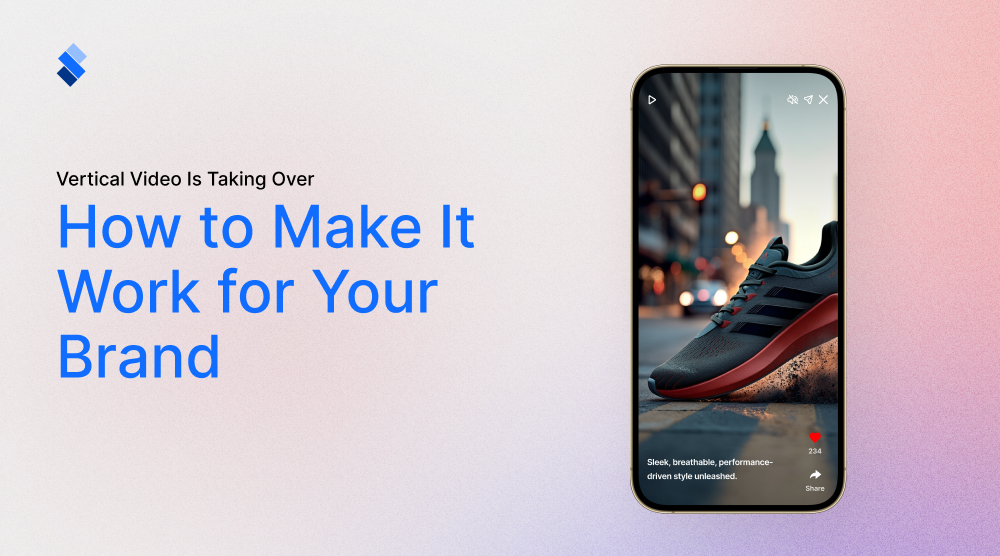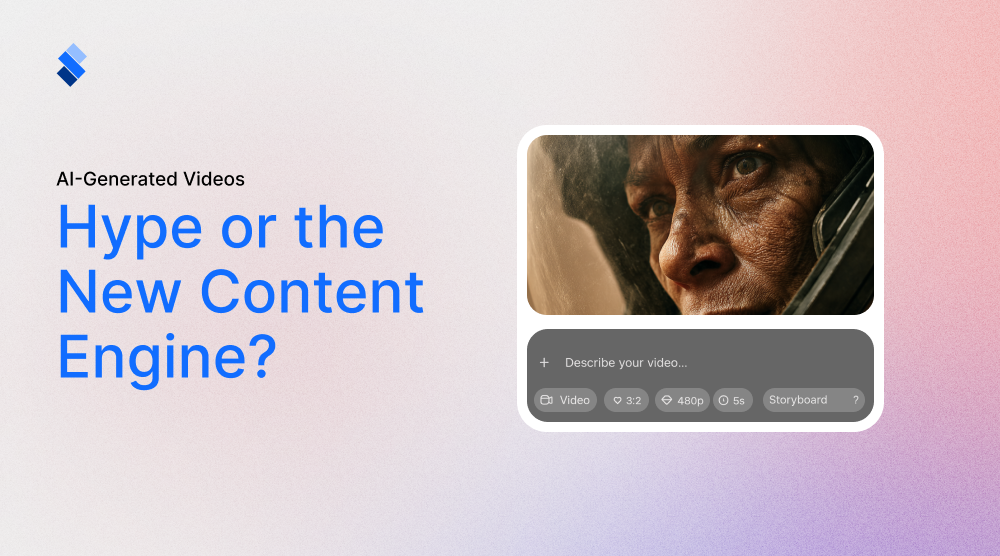Beyond the Download: How to Get Users to Visit Your App Regularly
It is in your best interest to not only get users to visit your app regularly, but also to anticipate when their engagement might start to drop off. Fortunately, there are solutions at hand.

Having an engaging app is a dream for small and large brands alike. By using it effectively, you can achieve certain milestones that are unavailable to other types of digital content. But while getting users to download your app is a major milestone, the real challenge begins after the install. With the average app losing 77% of its users within the first 3 days (and up to 90% after 30 days), retention is the key to long-term success. So, how do you keep users coming back? It’s not just about flashy features or aggressive marketing. Instead, it’s about creating an experience so valuable and engaging that users can’t imagine their daily routine without your app. So, let's take a deep dive into the strategies that drive consistent app usage and turn casual downloaders into returning users.
Why do people regularly visit apps?
To properly cover different strategies of getting users to visit your app regularly, we first must cover some basics. A continued use of an app is by no means an accident. Consider just how many apps there are, and how many get abandoned on a daily basis (even after a good first impression), and you'll soon see why it is important to understand the underlying reasons why people revisit them.

The answer lies in psychology, design, and strategic engagement triggers. Fine-tuning these is the key to ensuring that your app establishes itself as the go-to option for customers.
Convenience
One of the main reasons why someone would install an app is convenience. Namely, if engaging with your brand is the same on your website and your app, there isn't that much reason to install it, let alone revisit it. So, give a reason why a person should revisit your app (or why they should pay for using it), you ought to make it that much more convenient to use. For instance, you can offer:
- One-tap services - Where the user would need to go over a couple of steps on your website, your app makes it nearly instant. (Uber, DoorDash)
- Faster load times - A well-designed app can provide 3x quicker load times than mobile browsers. This alone can have people returning.
- Offline functionality - An obvious solution to an obvious problem. If your app has offline functionality, your users will likely turn to it over time. (Spotify downloads, note-taking apps)
Some apps become essential tools, like banking apps (checking balances, transfers), Google Maps, or Weather apps. With these, it is easy to see the convenience of everyday use. But, it is still worth noting that these, even though they are useful, users won't stand for subpar design.
Habbit
If convenience were enough, there wouldn't be much competition between apps. But, as you might have guessed, there are other factors that need consideration. Repeated use of apps implies a habit. And successful apps use psychological hooks to create routines, which then evolve into habits. A common tool here is notifications, where a well-timed and well-phrased message can motivate users to revisit your app. Examples of this include:
- "Your order is out for delivery!" (eCommerce)
- "You have 3 new matches!" (Dating apps)
- "Don't let Duo down! You've come so far!" (Duolingo)
- "Your friend just liked your post!" (Facebook, Instagram)
- "You’ve been inactive for 3 days!" (Fitness apps)
What's difficult here is walking the fine line between a welcome recommendation and an obnoxious message. A thought-out notification strategy will give a slight push at just the right time, thus motivating your users to revisit your app. A poorly designed one is more likely to annoy the user and have them delete the app.
Reward for loyalty
Another way to aid habit forming is through loyalty programs. After all, if you want people to return to your app, a fairly straightforward solution is to reward them for doing so. Just think of Starbucks Stars or Uber Rewards as clear examples of well-built brand loyalty programs. The biggest problem with them is making them motivating enough to encourage returns, yet not making them so costly that they hurt your bottom line.

Personalized experience
If you aren't using your app to provide a personalized experience, you are missing out. A key strength of apps is that they give you complete freedom to set them up as you see fit. And while some tools, like dynamic stories, do provide a lot of options for both personalization and design variety, they cannot really compete with the immersive experience that an app can provide. And if you make that immersive experience personalized, you will effectively solve the problem of user retention.
Social connection
It has long been established that humans are wired for interaction. If we like using something, we want to share it with our friends and family. Sucessful apps facilitate this. If people can easily share their experience with other people, they are far more likely to return to using your app. Integrating with messaging platforms, social media, and motivating community building can all be useful steps to improving the return rate of your app.

Get users to visit your app regularly
So, we have convenience, habit, loyalty, personalization, and social connection. All are powerful factors that motivate users to use specific apps on a regular basis. Does that mean that you need to use all of them to see results? Of course not. Depending on what your app is about and how you've designed it, you will likely use a combination of some of these. This combination needs to come in the form of a long-term strategy where you outline the average use of your app (time spent, what the user goes through, what motivates them to leave, etc) and the long-term engagement (how often does the average user need your app, how often should you notify them, how to schedule notifications, etc).
While it is impossible to give a one-size-fits-all solution when it comes to app design, we will provide some key guidelines that will help you outline a strategy of your own.
The art of onboarding
The process of getting users to visit your app regularly starts with app design. Namely, if you want your app to resonate with your audience, you need to have good onboarding. A poor onboarding experience is a one-way ticket to uninstall city. And even if the users push through the poor onboarding process (perhaps they want to try out your app), you can be sure that they won't return to it.
So, optimize yours by first keeping it simple. Don’t overload users with permissions or sign-up fields upfront. Also, let them explore before forcing registration. Once the user feels comfortable in your app, you can look to ask for personal data as a way to improve personalisation. What you should gradually do is showcase key features. For instance, you can use interactive walkthroughs or pointers throughout your app. Ideally, you should look to personalize the onboarding process. Different users require different levels of onboarding. And what would be a thorough and enjoyable process for some might be too annoying for others. Especially if we consider returning visitors who simply forgot some details about using the app. So, try to segment your audience and provide different onboarding experiences.
Single use
When optimizing the in-app experience, it is important to understand that you have limited time. Every person who comes to your app will only spend a limited time on it. Even time sync apps, like TikTok or Instagram, have some expected time windows. The better you understand this time window, the better experience you will be able to craft.

If a person doesn't get something from using your app, they might not return, or they might do so more rarely. So, provide something of value. Either ensure a pleasurable experience or provide a reward for each use. Loyalty programs are a clear option here, but you can also leverage the social aspect more heavily. Whether the user actually gets something from using your app or simply feels good from using it is irrelevant. What's important is that they aren't bored or frustrated.
Long-term presence
Having a long-term plan for your app is key if you want to have good return rates. Even a top-notch app experience might not convince your users to visit it on a daily basis. And without regular use, it can be difficult to form a habit. So, plan for the long term.
This will first entail understanding the natural need for your app. As we all know, not all apps have the same frequency of needs. Some apps we use on a daily basis, while others we use on a weekly, monthly, or even seasonal basis. For instance, a person might shop with their app on a weekly or even daily basis. While scheduling a vacation tends to be a more seasonal activity. Recognizing how often a person is supposed to interact with your app sets the bar for what to expect and strive for. Knowing this also helps you outline when to push notifications. After all, with notifications, timing is crucial, while the phrasing of notifications comes second. A well-timed notification might delight the user, or at least motivate them to reuse the app. On the other hand, a poorly timed notification can leave the user annoyed, or even motivate them to delete your app. The goal is to find the fine line between pushing notifications too rarely or too often. And in this search, patience is truly a virtue.
Using data to better cater to users
If you aren't gathering data from your users, you aren't using your app to its fullest extent. Data can be a powerful tool for motivating users to revisit an app regularly by uncovering behavioral patterns and preferences. By analyzing metrics like session frequency, feature usage, and engagement duration, you can identify what keeps users coming back and what causes them to leave.
For example, if data reveals that users who complete a specific action (e.g., setting a daily goal or enabling notifications) have higher retention rates, your app can encourage more users to take that step. Personalized push notifications, triggered by behavioral data (e.g., "You haven’t logged in this week! Your streak is at risk!"), can nudge users to re-engage at optimal times.
User segmentation
A big reason for gathering data is to meaningfully segment users into groups. Segmenting users based on their activity levels allows for tailored incentives that boost retention. By dividing users into groups (such as frequent, occasional, or at-risk), apps can deliver targeted rewards, challenges, or content that aligns with their habits. For example, data might show that users who engage with social features (like leaderboards or friend challenges) return more often. In response, your app could highlight these features for less-active users or introduce gamified elements (e.g., badges or progress bars) to create a sense of achievement. With A/B testing, you can explore different motivational strategies (like streaks vs. point systems) and refine what works best for each segment.

Taking it a step further
A big step forward in modern data analytics came with AI. With predictive analytics and machine learning, you can take retention strategies further by anticipating user drop-off before it happens. By training models on historical data, apps can identify early warning signs. This can be declining session time, skipped notifications or rarer visits to the app. By knowing this, you can look to proactively intervene. For example, if a user’s activity starts fading, your app might offer a limited-time reward or highlight new content tailored to their past behavior. Over time, continuous data analysis ensures that engagement tactics evolve with user preferences, creating a feedback loop that keeps the experience fresh and habit-forming. Apps like Duolingo and Spotify excel at this by constantly refining their algorithms to deliver personalized, motivating experiences that drive daily usage.
Final thoughts
Getting users to visit your app regularly is a necessity. What regularly means largely depends on what your app is about and how often it is useful to your users. Once you find the "standard of use", you'll need to look to make improvements so that as many of your users are close to that standard. This will require a fair bit of trial and error, as well as a committed approach to gathering and analysing customer data. But once you get the hang of it, you'll soon see results. With AI, you can even look to anticipate drop-offs and mitigate them. All in all, modern audience engagement thrives on building loyalty and long-term relationships. So, don't shy away from rolling up your sleeves and committing your time and effort to this problem.







